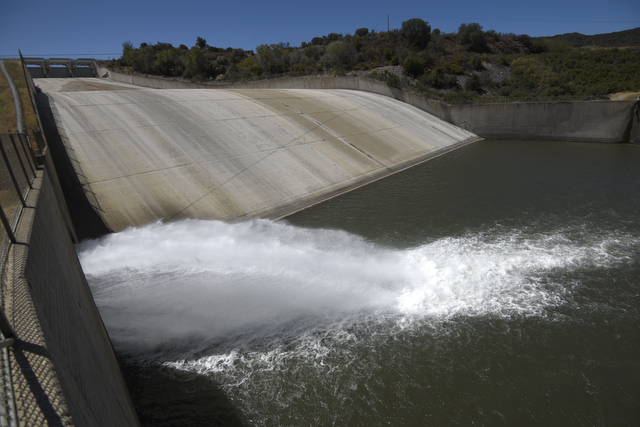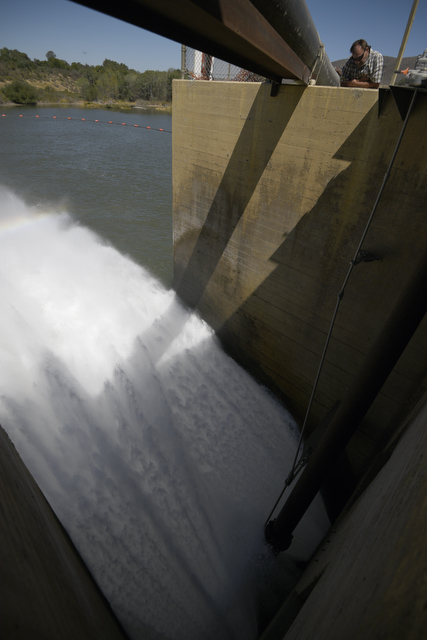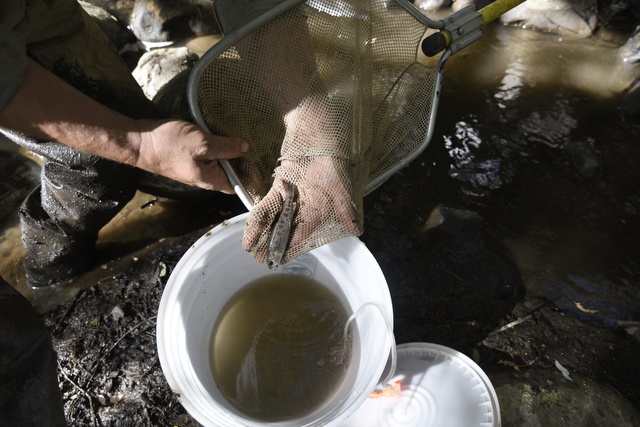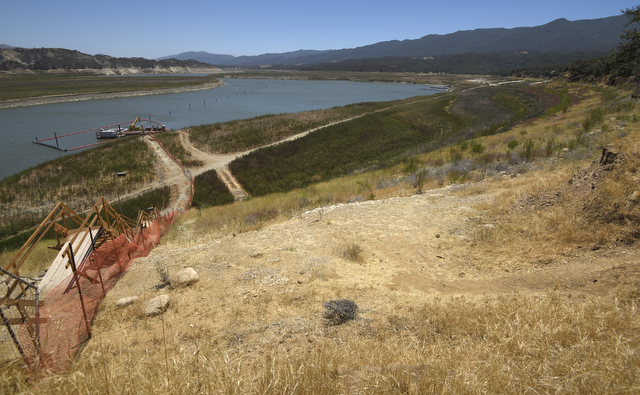Biologists Go E-Fishing for Steelhead
Stun and Release Method Commences as Cachuma Goes ‘Dry’

With Lake Cachuma water levels plunging to historic lows, the Bureau of Reclamation began releasing 320 acre-feet of water down the Santa Ynez River a day and will continue doing so until 7,800 acre-feet have been let go as part of a legally mandated program to replenish the groundwater basins of downstream cities and water providers.

With this release, the bathtub ring surrounding the lake will become much more visually dramatic. For those trying to maintain struggling populations of federally endangered steelhead trout: “We’re afraid we’re witnessing an extinction-level event,” said Scott Engblom, a biologist with the Cachuma Operation and Maintenance Board. Engblom and researchers working for an alphabet soup of other governmental wildlife agencies went wading into the Santa Ynez River this week armed with electric stun devices, which they use as “e-fishing” rods to catch juvenile steelhead in the main stem of the Santa Ynez.

When steelhead are zapped with the low-level currents emitted by the stun guns, they flap over on their sides, making them more reflective of the sunlight. This makes them easier to spot, catch, and relocate into deeper, cooler pools located in Hilton Creek, an artificially watered tributary of the river. In addition, these biologists are catching nonnative predator fish that made it downstream past Lake Cachuma.
Efforts to save the steelhead are controversial even when water is plentiful; during droughts, the fish have few friends. County Supervisor Peter Adam, for example, objected the Bureau of Reclamation is releasing more water for the steelhead than federal rules mandate. Once the dam dipped below 30,000 acre-feet, Adam claimed no water releases should be made at all. County water czar Tom Fayram demurred, saying he wasn’t “entirely sure” Adam was correct.

Fayram told county supervisors at a meeting Tuesday that he’d been seeking guidance on this question from Bureau of Reclamation officials. At that meeting, Fayram’s bad news was interrupted by even worse news. Without continued inflows of State Water — or significant rainfall — Lake Cachuma could go dry as early as December. Although local water agencies have secured more than enough state water to meet their needs, the pipes delivering that water have limited capacity. They can deliver at most 42 acre-feet a day. Currently, South Coast customers are using about five acre-feet a day more than that.
As successful as conservation efforts have been, Fayram said, local water agencies need to tighten their customers’ belts even more in the next few months. The issue before the supervisors was whether the county should initiate negotiations with the Bureau of Reclamation to renew its contract, which expires in 2020. The supervisors voted unanimously to do just that.
In the meantime, South Coast water agencies have been pumping their ground basins for all they’re worth. The City of Santa Barbara will make it through the year if and when its new desalination plant comes on line as scheduled this October. For Montecito, a desal deal with Santa Barbara is imperative. Thus far, no deal has been reached.
The county supervisors also debated how they will implement a new statewide law requiring that groundwater basins be managed in a sustainable fashion. Given that multiple water agencies often draw from the same basin, the new law also requires such agencies form a joint powers entity for management purposes.
Most immediately affected are the vast basins underlying the Cuyama Valley, so strip mined by various enterprises since the 1950s that the water level has dropped 1,500 feet. The United States Geological Survey determined that water is being sucked out of the Cuyama basins at twice the rate it’s being replaced. Since the 1940s, it’s estimated that the ground near the town of New Cuyama has sunk by 1.6 feet and will drop another foot in the next 54 years.
Ultimately the supervisors voted 4-1 in favor of a resolution, stating the County Water Agency should “coordinate, collaborate and participate,” in the formation of the new management super agencies. Supervisor Adam cast the sole vote against.
Editor’s Note: An earlier version of this story indicated the Bureau of Reclamation contract renewal was voted in 4-1, with Supervisor Peter Adam against; the vote was unanimous to renew.


